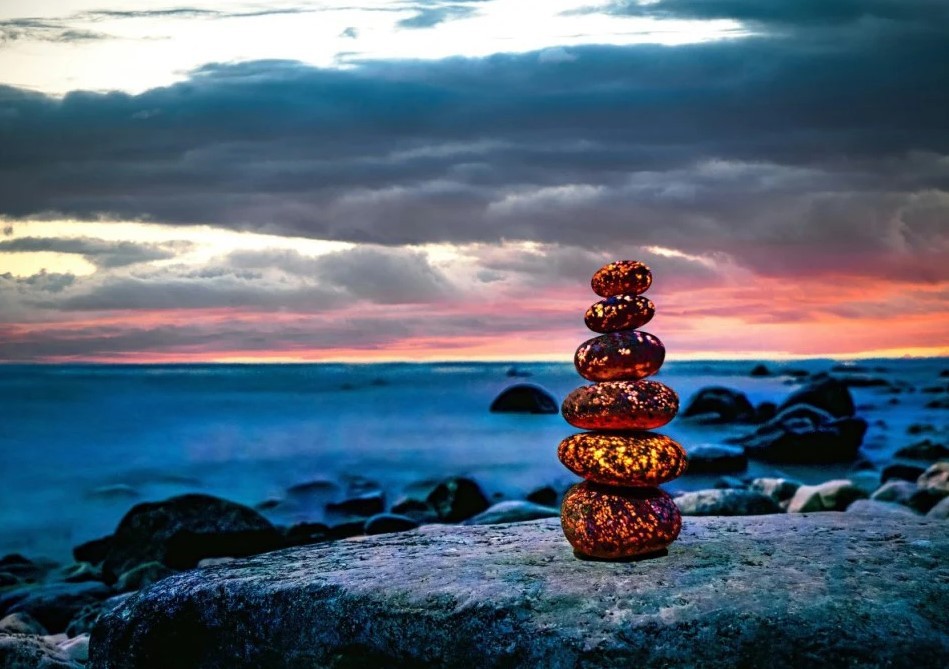Facts about the Greatest Great Lake: Lake Superior
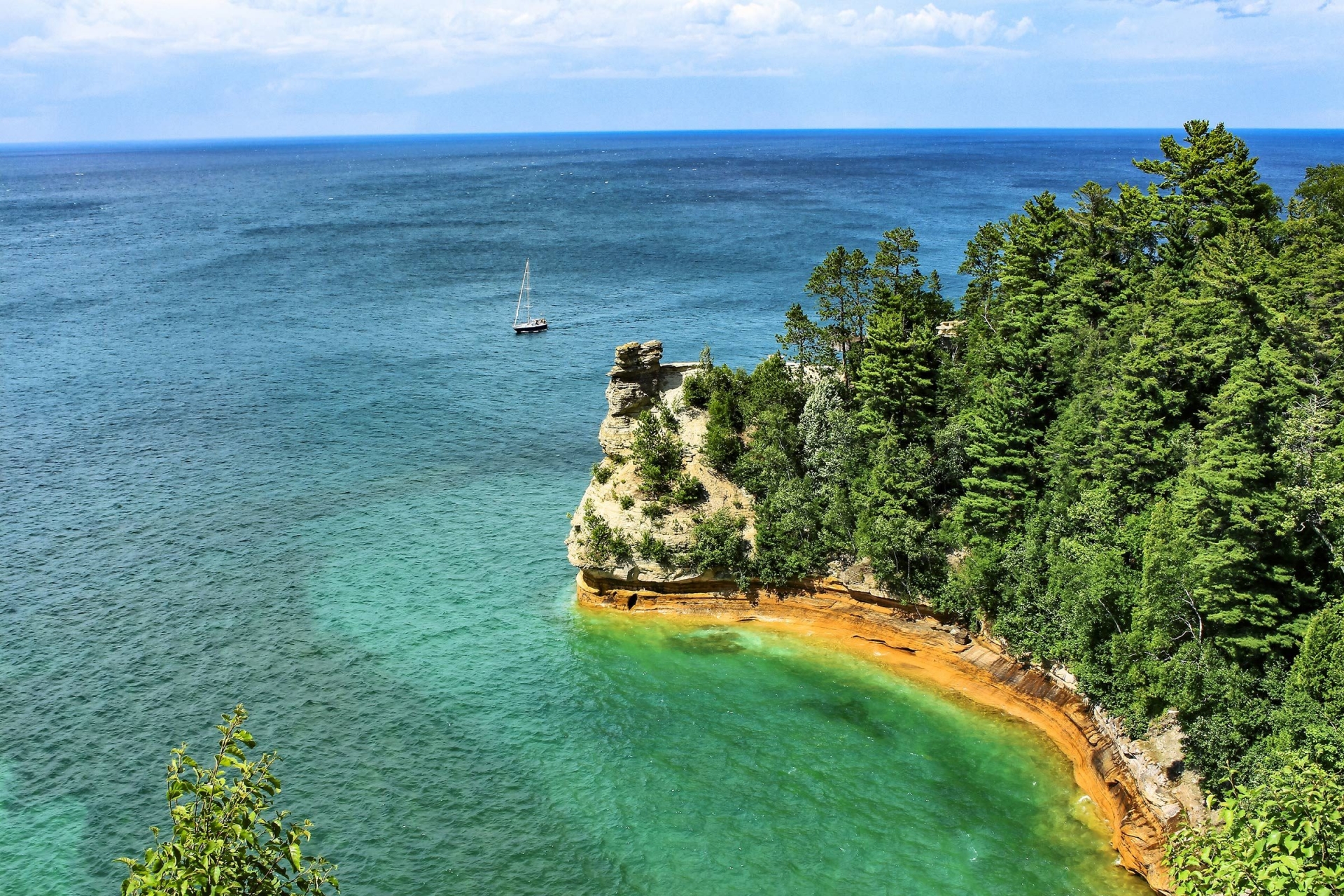 |
| Lake Superior. Photo: Reader's Digest |
Lake Superior situated on the northern edge of Wisconsin, Lake Superior extends from the upper peninsula of Michigan north to Ontario, Canada, and reaches west to the eastern edge of Minnesota. The name Superior refers to its size and also designates the lake's position as the northernmost of all the Great Lakes.
The lake is about 160 miles (257 kilometers) wide and about 350 miles (563 km) long. It has a surface area of 31,700 square miles (82,100 square km) and water volume of 2,900 cubic miles (12,100 cubic km). The shoreline measures 2,726 miles (4,385 km), according to the Environmental Protection Agency (EPA).
How deep is Lake Superior?
The deepest point in Lake Superior is 1,300 feet (400 meters) below the surface, making a complete freeze a rarity. Lake Superior boasts extremely clear water, with an average underwater visibility of 27 feet (8.2 m). It takes almost 200 years for the lake to refill with new water, according to the University of Wisconsin.
Lake Superior water temperature
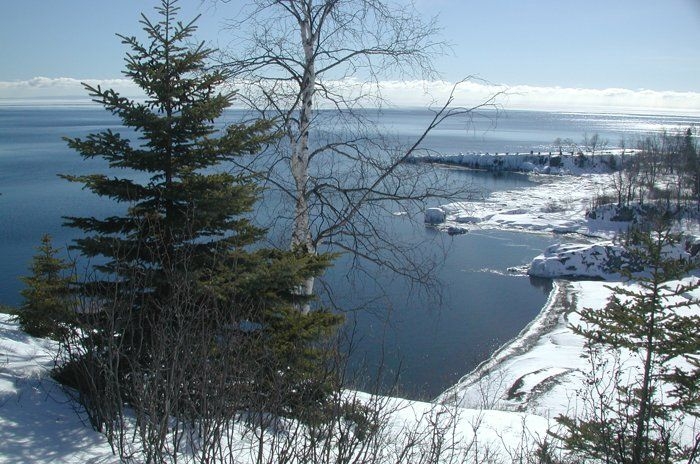 |
| Winter in Lake Superior. Photo: Pinterest |
Like all of the Great Lakes, Lake Superior is prone to lake effect snow, but the weather is generally moderate, with warmer temperatures than inland throughout the year. Winter temperatures around the lake rarely fall below minus 30 F (minus 34 C), well above inland temperatures. June and July are calm months, while October and November are prone to storms.
Ice covers rocks on Lake Superior. During most winters the lake is 40 to 95 percent covered with ice. (Image credit: fstockfoto Shutterstock)
During most winters, the lake is 40 to 95 percent covered with ice, although it rarely completely freezes. The last time Lake Superior froze over was in 2014. Overall, the Great Lakes reached a 91 percent ice cover that year, which is the most the lakes have frozen since 1979. Freezing of the lakes is monitored because it affects hydropower generation, commercial shipping, the fishing industry and more, according to the Office of Oceanic and Atmospheric Research.
The average water temperature is 40 F (4.4 C) — lower than the other Great Lakes, which are farther south. The water temperatures during the summer months average about 55 F, but surface temperatures reached a record 68.7 F (20.4 C) in August 2010 and are affected by the amount of surface ice during the previous winter, according to Livescience.
Weather
Weather is the state of the atmosphere with respect to current temperature, precipitation, wind, and cloudiness. Lake Superior can modify the daily weather through a phenomenon known as "lake effect." Compared to inland temperatures, shoreline temperatures can be noticeably warmer in winter and much cooler in summer. This is because water is slower to absorb and release heat than land. The "lake effect" can also super-size storms by adding moisture and speed to wind passing over the lake. Michigan's Upper Peninsula is typically buried under six times more snow each year than downtown Duluth because of the lake effect.
In summer, a dome of high pressure can form over the lake pushing approaching storms to the southeast. The dangerous "Gales of November" occur in autumn when low-pressure systems pass over the lake. Wind speeds can easily reach 50 mph and gusts can exceed 100 mph. Fog hides Duluth under a heavy blanket for 52 days in an average year (by comparison, Minneapolis averages 11 days).
Fog forms when temperature and dewpoint differ by less than 4 °F (2.5 °C). As the moisture in warm air condenses over the colder surface waters, advection fog rolls into Lake Superior's coastal communities. Sea smoke occurs when seriously cold air moves over relatively warmer water during winter, according to Minnesota Sea Grant.
Life on Lake Superior
Lake Superior is home to about 80 species of fish, including carp and varieties of trout, salmon and perch.
The Lake Superior region is also home to many common native plant species, including Michigan's state tree, the white pine, and Flowering Rush, an aquatic plant that grows along the shoreline. Lake Superior's basin is home to nearly 60 orchid species.
As with many lakes, Lake Superior is home to many species of birds, including varieties of hawks, loons, owls and woodpeckers. Duluth's Hawk Ridge, which is on the lake's north shore, hosts as many as 10,000 migrating birds of prey each day during the fall migration season.
There is a small population of endangered whooping cranes on the lake's north shore, one of only two crane species in North America. As of 2017, there were only 483 individuals in the wild across North America, according to the International Union for Conservation of Nature.
Tourism
 |
| Photo: Pinterest |
Tourism is one of the economic mainstays of the Lake Superior region, which is home to over 600,000 people (474,150 Americans and 155,675 Canadians). An abundance of festivals, concerts, events, and unique dining and shop-ping opportunities create a cheerful atmosphere, particularly in Lake Superior's two metro areas: Duluth, Minnesota, and Thunder Bay, Ontario.
Summer brings boaters, sightseers, campers, kayakers, anglers, and even swimming sunbathers to the shore. Beachgoers should know how to escape from the rip currents that can form along Lake Superior's south shore. Known for its clean water, Lake Superior's water is a Mid-west SCUBA diving epicenter for sunken ships. In June, runners from around the world vie to win "Grandma's Marathon." Winter excites skiers, snowmobilers, snowshoers, and ice fishing fans. The Bayfield sea caves near the Apostle Islands in Wisconsin are worth a trek during years with enough ice cover.
Every January, thousands gather along Minnesota's North Shore to cheer on the dogs and the mushers during the John Beargrease Sled Dog Marathon, a 400-mile journey that re-traces part of the region's history. All recreationists, but especially those who venture out in winter, should dress and behave to avoid hypothermia.
The captivating history of the world’s largest freshwater lake.This classic history of Lake Superior, from the earliest explorations to the explosion of industry on its shores, takes the reader on a tour from Duluth to Isle Royale, from Thunder Bay to Sault Ste. Marie, from Pictured Rocks to the Apostle Islands. Grace Lee Nute tells the fascinating stories of the Native Americans, voyageurs, missionaries, and others who created the way of life that many generations have known on the edge of this magnificent body of water. |
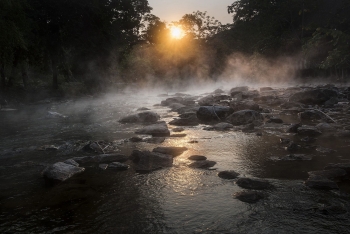 Mysterious FACTS about 'BOILING RIVER', Shanay-timpishka, in Peru Mysterious FACTS about 'BOILING RIVER', Shanay-timpishka, in Peru There exists a mysterious boiling river in the Amazon that burns so hot, which is “Shanay-timpishka” translates to “boiled with the heat of the sun.” ... |
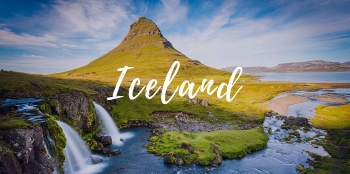 Top 12 Fun Facts about ICELAND - 'The land of fire and ice' Top 12 Fun Facts about ICELAND - 'The land of fire and ice' Iceland has been an extremely popular destination in the last few years, so much so that you may think you already know a lot about ... |
 Facts about Kamala Harris Facts about Kamala Harris You may already know Sen. Kamala Harris, D-Calif., is the first Black woman and the first Asian American woman to be chosen as a major ... |



